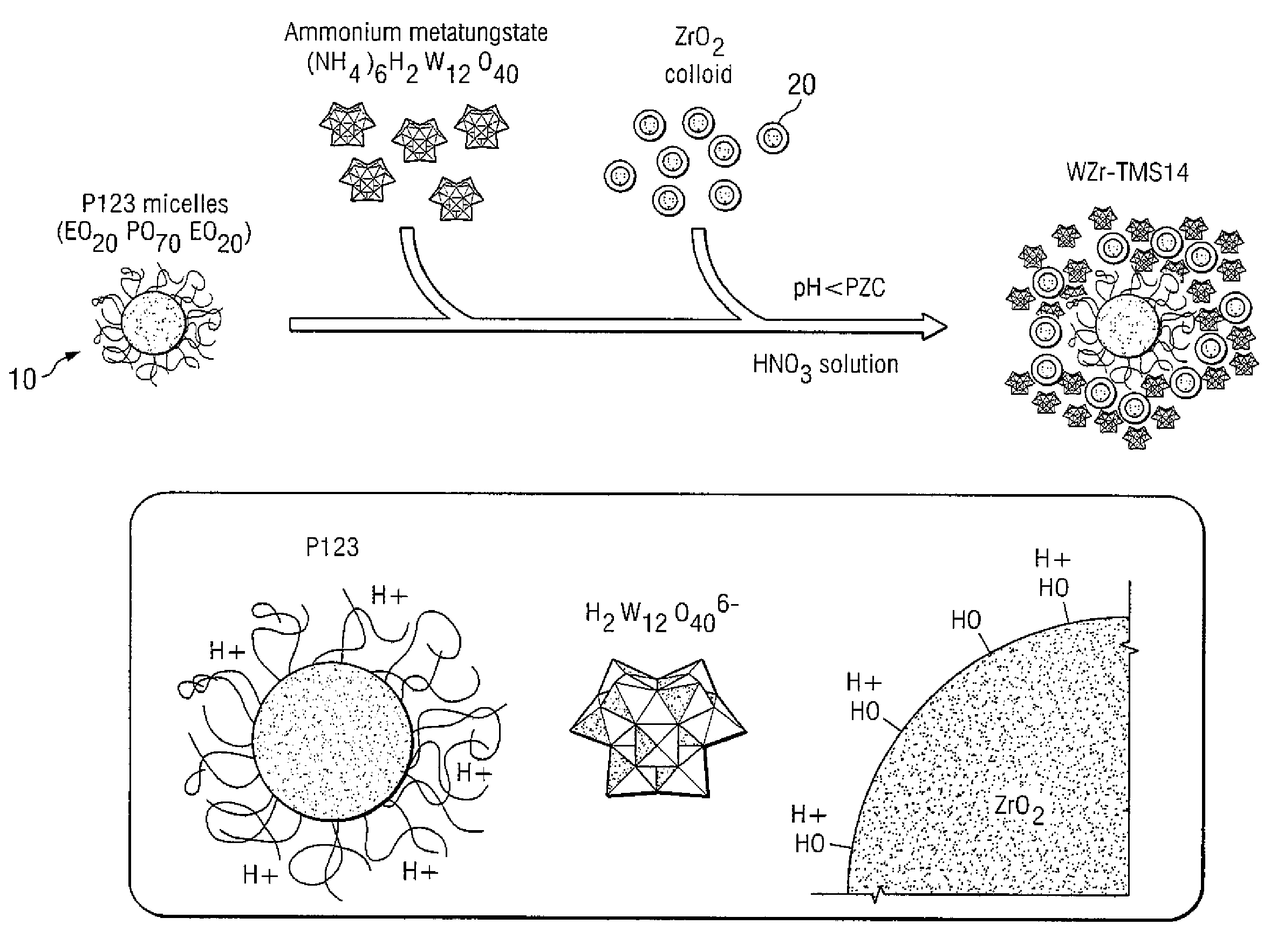Supported catalysts using nanoparticles as the support material
a technology of supporting materials and nanoparticles, which is applied in the field of catalytic materials, can solve the problems of uneven distribution of active phase throughout the catalyst, low amount of active phase that can be supported, etc., and achieve good distribution of active phase and enhanced catalytic activity
- Summary
- Abstract
- Description
- Claims
- Application Information
AI Technical Summary
Benefits of technology
Problems solved by technology
Method used
Image
Examples
examples
Synthesis of Nano-WO3 / ZrO2 Using Surfactant Templating
[0023]The synthesis of mesoporous tungstated zirconia designated WZr-TMS14 was described previously [15]. Briefly, ammonium metatungstate ((NH4)6H2W12O40 or “AWO”, Strem) was added to a solution of Pluronic® P123 surfactant (MW-5750, BASF). This surfactant is a non-ionic poly(ethylene oxide)-poly(propylene oxide)-poly(ethylene oxide) triblock copolymer with the structural formula EO24PO70EO20. A colloidal sol of zirconium oxide (Nyacol® Zr10 / 20, 20 wt % ZrO2, PQ Corp.) was added to the stirring solution, and immediate precipitation resulted. The final weight ratio of the synthesis mixture was 1.0 ZrO2:0.5 AWO:0.5 Pluronic:11.9 H20. After stirring for 2 hr, the mixture was left to age for 2 days at room temperature. A white precipitate was recovered, washed three times, and left to dry in air. After being ground into a fine powder, the sample was calcined under flowing air at 600° C. for 3 hr.
[0024]Pluronic triblock copolymer surf...
PUM
| Property | Measurement | Unit |
|---|---|---|
| diameter | aaaaa | aaaaa |
| weight ratios | aaaaa | aaaaa |
| temperature | aaaaa | aaaaa |
Abstract
Description
Claims
Application Information
 Login to View More
Login to View More - R&D
- Intellectual Property
- Life Sciences
- Materials
- Tech Scout
- Unparalleled Data Quality
- Higher Quality Content
- 60% Fewer Hallucinations
Browse by: Latest US Patents, China's latest patents, Technical Efficacy Thesaurus, Application Domain, Technology Topic, Popular Technical Reports.
© 2025 PatSnap. All rights reserved.Legal|Privacy policy|Modern Slavery Act Transparency Statement|Sitemap|About US| Contact US: help@patsnap.com


